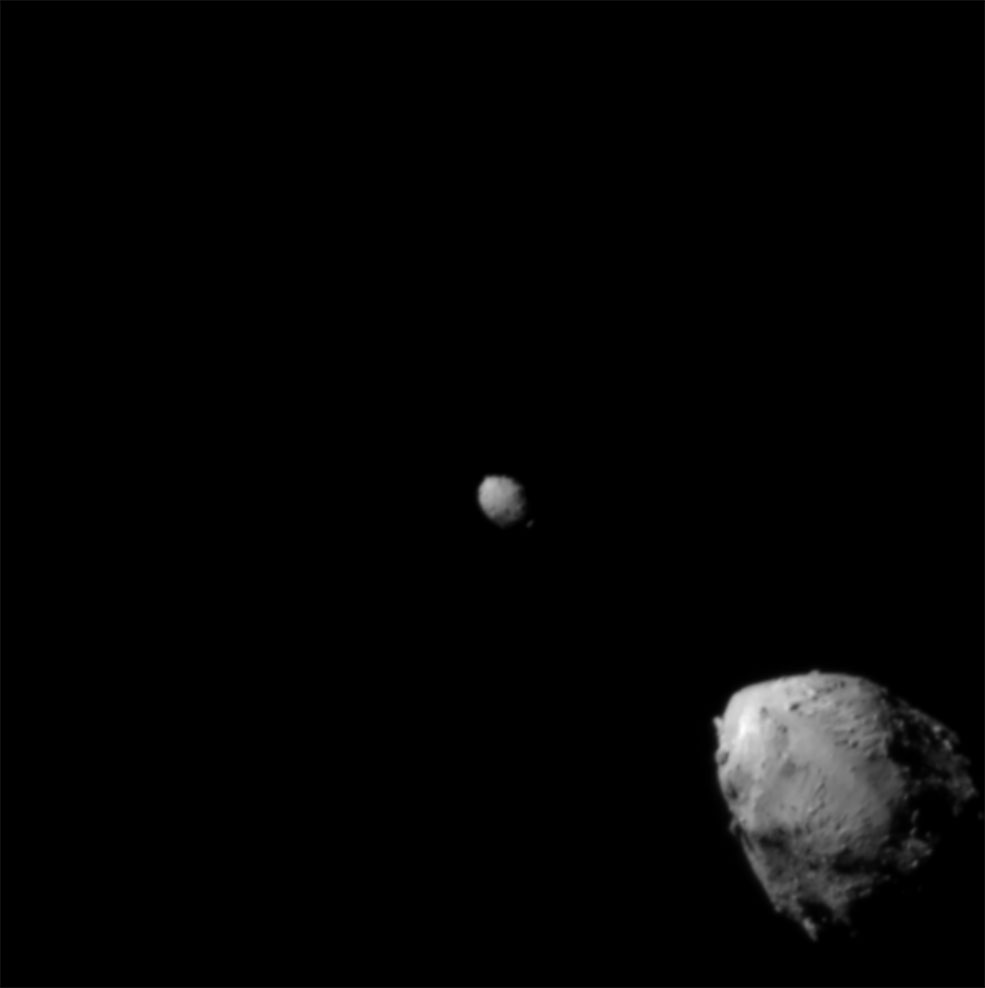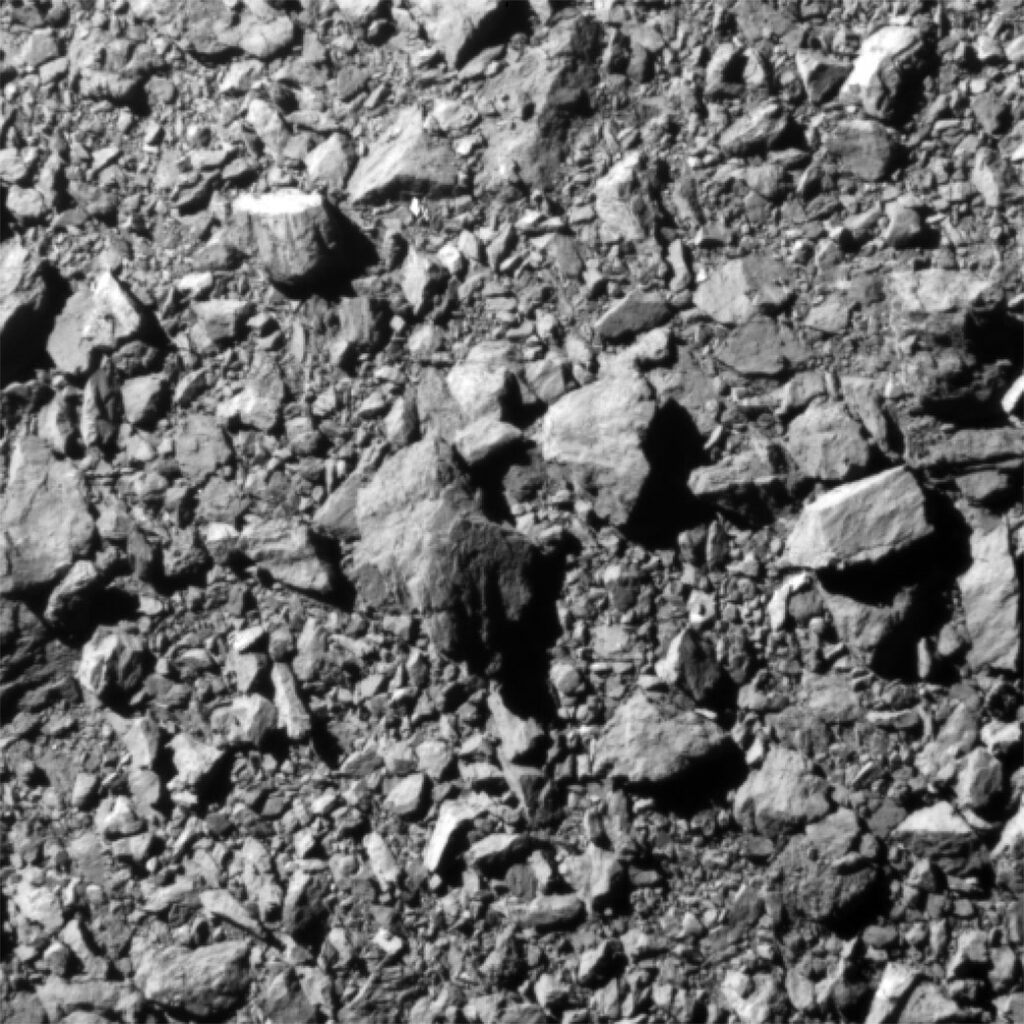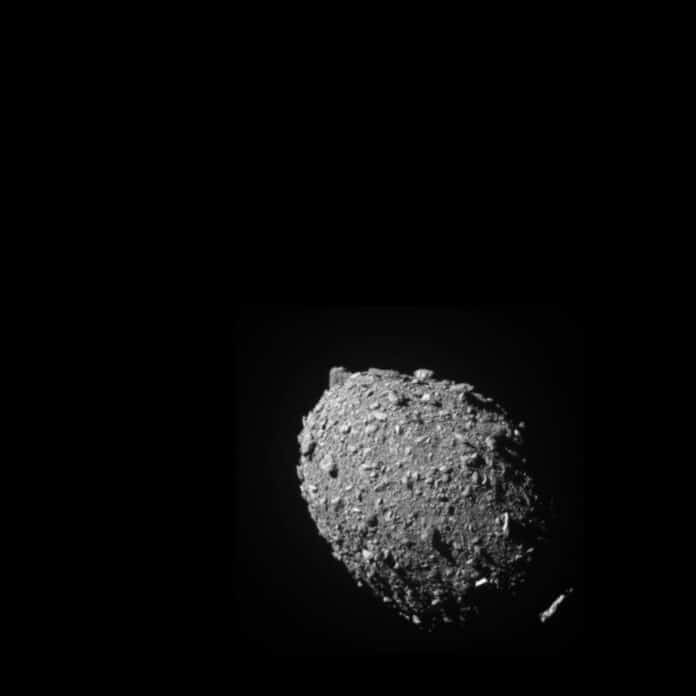NASA’s Double Asteroid Redirection Test (DART)is the first-ever mission dedicated to investigating and demonstrating one method of asteroid deflection by changing an asteroid’s motion in space through kinetic impact. DART’s target is the binary, near-Earth asteroid system Didymos.
After ten months of flying in space, the spacecraft successfully impacted its asteroid target on Monday, Sept 26. DART’s impact with the asteroid Dimorphos is an example of a viable mitigation strategy for protecting the planet from an Earth-bound asteroid or comet.
Mission control at the Johns Hopkins Applied Physics Laboratory (APL) in Laurel, Maryland, announced the successful impact at 7:14 p.m. EDT.
Dimorphos is a small body with a diameter of only 530 feet (160 meters). It orbits around the bigger Didymos, a 2,560-foot (780-meter) asteroid. There is no danger to Earth from either asteroid.

NASA Administrator Bill Nelson said, “At its core, DART represents an unprecedented success for planetary defense, but it is also a mission of unity with a real benefit for all humanity. As NASA studies the cosmos and our home planet, we’re also working to protect that home. This international collaboration turned science fiction into science, demonstrating one way to protect Earth.”
The study team will now use ground-based telescopes to observe Dimorphos to verify that the impact of DART altered the asteroid’s orbit around Didymos. One of the main goals of the full-scale test is to measure how much the asteroid was deflected properly. Scientists anticipate that the impact will reduce Dimorphos’ orbit by about 1%, or roughly 10 minutes.
Thomas Zurbuchen, associate administrator for the Science Mission Directorate at NASA Headquarters in Washington, said, “Planetary Defense is a globally unifying effort that affects everyone living on Earth. Now we know we can aim a spacecraft with the precision needed to impact even a small body in space. Just a small change in its speed is all we need to make a significant difference in the path an asteroid travels.”

The spacecraft’s sole instrument, the Didymos Reconnaissance and Asteroid Camera for Optical navigation (DRACO), together with sophisticated guidance, navigation, and control system that works in tandem with Small-body Maneuvering Autonomous Real-Time Navigation (SMART Nav) algorithms, enabled DART to identify and distinguish between the two asteroids, targeting the smaller body. These systems guided the spacecraft to target Dimorphos, intentionally crashing into it at roughly 14,000 miles (22,530 kilometers) per hour to slightly slow the asteroid’s orbital speed. DRACO’s final images, obtained by the spacecraft seconds before impact, revealed the surface of Dimorphos in close-up detail.
Lindley Johnson, NASA’s Planetary Defense Officer, said, “DART’s success provides a significant addition to the essential toolbox we must have to protect Earth from a devastating impact by an asteroid. This demonstrates we are no longer powerless to prevent this type of natural disaster. Coupled with enhanced capabilities to accelerate finding the remaining hazardous asteroid population by our next Planetary Defense mission, the Near-Earth Object (NEO) Surveyor, a DART successor could provide what we need to save the day.”
APL Director Ralph Semmel said, “This first-of-its-kind mission required incredible preparation and precision, and the team exceeded expectations on all counts. Beyond the truly exciting success of the technology demonstration, capabilities based on DART could one day be used to change the course of an asteroid to protect our planet and preserve life on Earth as we know it.”
